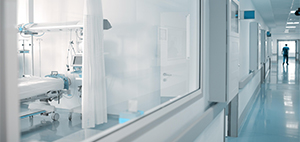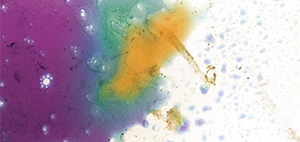Germs be gone!
Maintaining good hygiene involves more than just washing hands; this month's TechOffers show new ways to keep germs and diseases at bay.
Set foot into any clinic and you might find that the air inside has an astringent, almost unpleasant smell. Part of that smell comes from the alcohol that clinics use to disinfect and maintain hygiene standards, in the name of preventing harmful germs from spreading from one patient to another.
In our densely populated cities, the need for good hygiene has never been more important. Disease-causing microorganisms are developing resistance against antimicrobial agents, complicating the treatment of many diseases. For example, the World Health Organisation (WHO) reported in 2018 that an estimated 558,000 people globally have drug or multi-drug resistant tuberculosis—a life-threatening bacterial infection that affects the lungs. The report also estimated 230,000 deaths to have occurred from the disease.
To safeguard ourselves against these infectious agents, solutions that help maintain a high standard of hygiene are in demand. Here, we present three TechOffers that showcase innovative ways to detect and combat harmful germs, keeping us safe from diseases.

Surfaces that stay clean
Infections are frequently caused by contact with contaminated surfaces. In built environments such as hospitals and nursing homes, touch surfaces such as furniture, walls, equipment, etc. often harbour infectious microorganisms, contributing to hospital-associated infections.
To create surfaces that are resistant to microbial growth, a zinc/zinc-oxide composite that kills a wide spectrum of microorganisms was developed. Unlike other antimicrobial solutions, the material does not induce antimicrobial resistance. Instead, the composite kills microorganisms by generating reactive oxygen species (ROS) in the presence of water or air. The ROS produced also clears away foul odours by degrading organic compounds that contribute to unpleasant smells.
This solution may be incorporated into plastic products, paints, coatings, textiles, pet care products, and even personal care and food contact items. By endowing everyday items with antimicrobial properties, the risk of infections due to rampant microbial growth on surfaces can be reduced.

A fresh breath of air
Besides contact with dirty surfaces, germs can also reach us directly through the air we breathe. Some of the most dangerous diseases, like tuberculosis or measles, are primarily transmitted through the air.
A new technology has been devised to help keep the air fresh and clean. The solution combines a photosensitiser compound with an antimicrobial polypeptide providing prolonged antimicrobial and air purification effects. Activated by natural light, the solution produces ROS, which eradicates a wide range of microorganisms, including bacteria and fungi. The product has also been proven to remove organic compounds like formaldehyde, which contributes to unpleasant odours.
Currently, the technology is formulated as acrylic paint for concrete walls, a non-toxic disinfectant and also as an antimicrobial textile. As the solution does not irritate the skin or eyes, it can potentially be used in air filters, medical products such as bandages and even water treatment solutions.

Digging up the dirt in food
As clean as the air may be, germs can still be hiding in plain sight, served up unsuspectingly in our meals. Poor hygiene practices during food preparation can lead to food contamination, a breeding ground for foodborne diseases.
Food contamination, which is often invisible to the naked eye, requires specialised tests and expensive equipment to detect. Innovations that reduce the cost and complexity of these tests would create many benefits for both large and small enterprises. According to a market research conducted by ReportLinker, the global food safety testing market is predicted to grow to $24.6 billion by 2023, at a compound annual growth rate of 7.7%.
To quickly assess surface hygiene, a purple spray that changes colour when it detects dangerous levels of contaminants has been developed. The technology can detect typical foodborne pathogens like Salmonella and Listeria, as well as organic contaminants such as raw chicken juices. Compared to industry-standard tests like ATP swabs, the newly-developed spray performs equally well and is considerably cheaper.
To top it all off, the chemical-based solution boasts a long, stable shelf-life under ambient temperatures. The spray is also easy and safe to use, fitting for various industries without the need for specialised training or equipment. By incorporating this chemical into other formats, unique applications may be developed.

